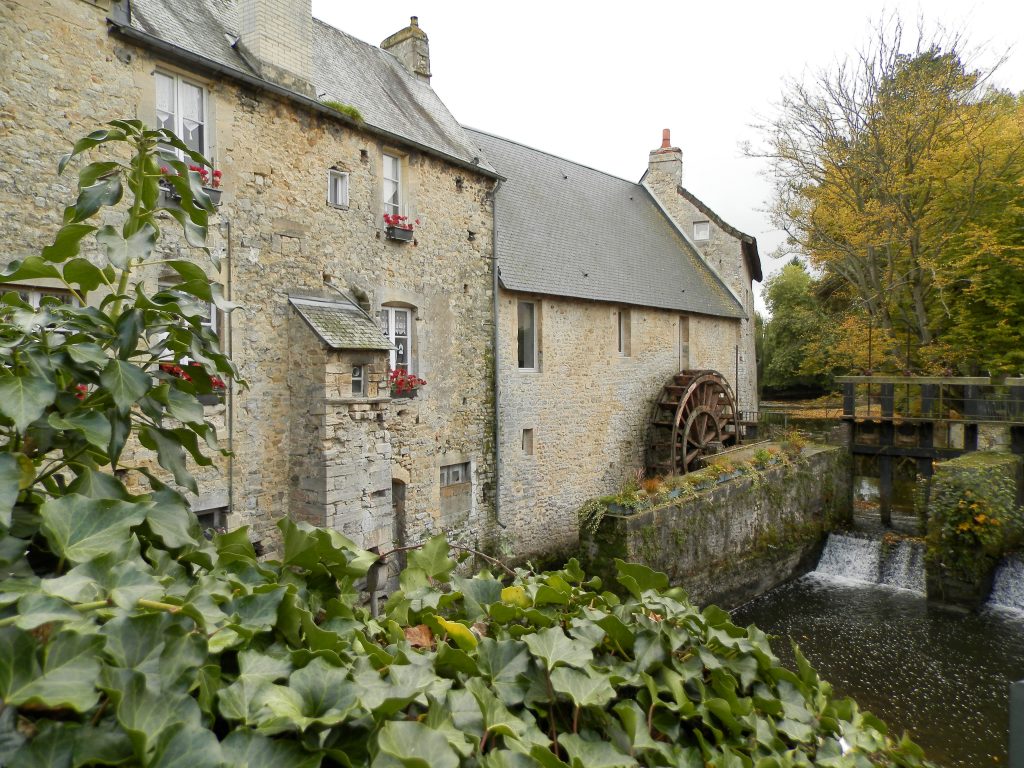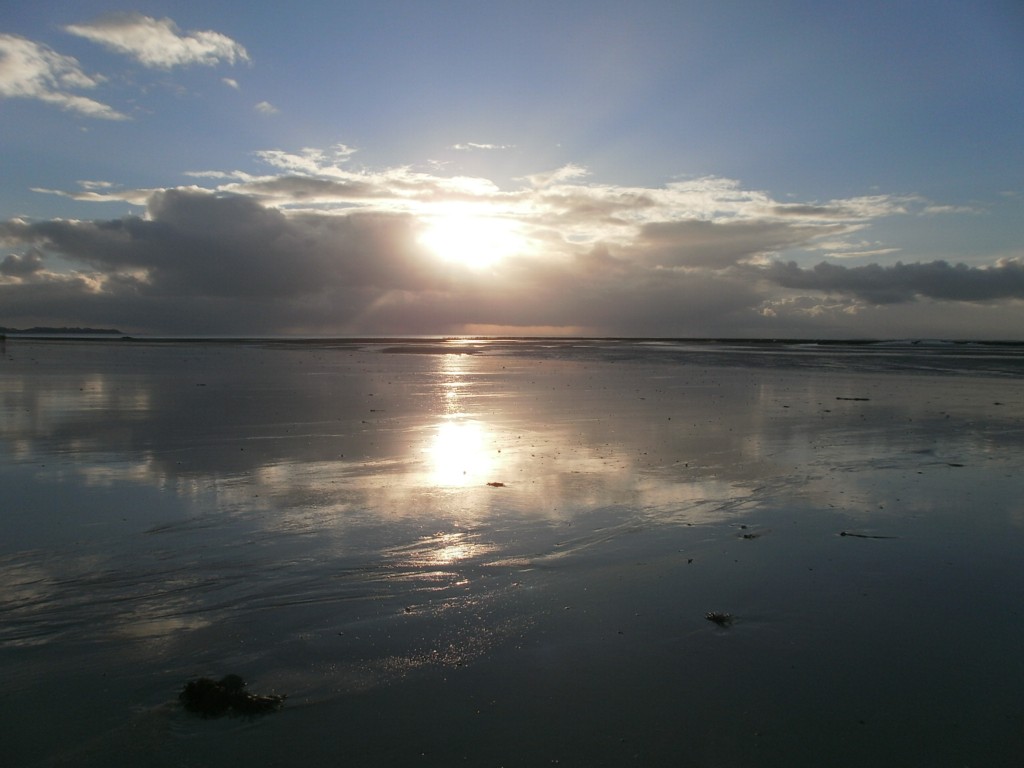The Normandy / Manche region
The Normandy region of France combines a dramatic coastline with lush farmland, bustling market towns, and historic landmarks. From the days of William, Duke of Normandy and King of England, to the drama of the Normandy D-Day landings, you will find yourself surrounded by key historical events. Gastronomic delights abound, from the fine cheeses to the fresh fish, to the cider and the Calvados. Add to this the opportunities for walking, cycling, fishing, horse-riding, and water sports; Normandy has it all! This website (in English) will provide you with lots of useful information.
The area around Le Guislain
Le Guislain is an ideal base from which to explore the many attractions that Normandy has to offer. Within 30 minutes drive are the amazing sandy beaches of the west coast that never seem to get busy. The warm shallow sea is lovely for swimming and at low tide you can watch the local farmers with their tractors tending the acres of oyster and mussel beds.
The busy towns of Coutances and St Lo, and the pretty market town of Villedieu-les-Poeles, the ancient center of the copper industry, can also be reached within half an hour.
The area offers a wealth of local markets; on a Tuesday Villedieu les Poêles has one of the largest markets where you will find a number of producers of local Norman produce: andouille (Norman speciality sausage) cream, butter, eggs, poultry, honey, seafood, fruit and vegetables, flowers, clothes, linen and gifts; Gavray has the exciting livestock market, and throughout July a weekly Norman market. On a Sunday you can enjoy the morning market at Hautville-sur-mer where you can buy your lunch and eat it on the promenade.
Follow this link to find out more about the immediate area (in French)
Further afield
 About 30 minutes drive from le Guislain is the Chateau Pirou a fortified castle founded in the twelfth century. It houses a beautiful tapestry, completed in the style of the one at Bayeux, that tells the story of the Norman Conquest of Sicily. The grounds are lovely to stroll around and most parts of the chateau are relatively easy to access. The Battlements are more tricky and are probably best left to the fittest!
About 30 minutes drive from le Guislain is the Chateau Pirou a fortified castle founded in the twelfth century. It houses a beautiful tapestry, completed in the style of the one at Bayeux, that tells the story of the Norman Conquest of Sicily. The grounds are lovely to stroll around and most parts of the chateau are relatively easy to access. The Battlements are more tricky and are probably best left to the fittest!
Just over half an hour away is the pretty town of Granville. There is a wonderful Saturday market and (my favourite!) a teashop-Picorette. Granville has an eclectic mix of boutique style shops, and the area around the harbour has a good choice of restaurants. The old town is well worth exploring as is the Christian Dior museum. Click here for an arial view of the town.
Less than an hour away is the picturesque Mont St Michel and in the other direction the famous town of Bayeux. The Normandy D-Day beaches can also be reached within the hour.
Bayeux itself is very pretty and there is a lot to see and do within the town and in the surrounding area. A visit would be incomplete without seeing the Bayeux Tapestry. Made in the 11th Century by English nuns at the request William the Conqueror’s half brother Odo, Bishop of Bayeux, the embroidery tells the story of the conquest from 1064 until the end of the Battle of Hastings in 1066. 20th century history is also well-represented and a visit to the Memorial Museum is highly recommended, as is the CWGC site, which can be found a short walk along the road from the museum. If you have an interest in art, then the Museum of Art (MAHB) is a must. This museum offers an exploration of the history of European art. Combined tickets for all of the museums can be purchased at any of the museums and this link will take you to the current prices. Just be aware of closing times for lunch
Bishop of Bayeux, the embroidery tells the story of the conquest from 1064 until the end of the Battle of Hastings in 1066. 20th century history is also well-represented and a visit to the Memorial Museum is highly recommended, as is the CWGC site, which can be found a short walk along the road from the museum. If you have an interest in art, then the Museum of Art (MAHB) is a must. This museum offers an exploration of the history of European art. Combined tickets for all of the museums can be purchased at any of the museums and this link will take you to the current prices. Just be aware of closing times for lunch
Those with an interest in World War II might like to visit the Batterie Allemande at Longue sur Mer which is situated between Bayeux and Arromanches. This battery was a key element in the Atlantic Wall and played a major role in the D-Day Invasion.
Caen is an hour away and is well worth a day-trip. Parking is relatively easy , but if you don’t fancy driving in the city centre there is a Park and Ride at Ifs (just on the peripherique). The Tourist Office is in the city centre close to the Castle. The Castle is one of the largest enclosures in Europe and was built by William the Conqueror in around 1060. Once inside the castle walls you will discover a large area with museums, exhibition and entertainment. Whilst In French this link provides detailed information for the programme for this year.
If you want to go further afield, a visit to Falaise is well worth the hour and a half drive. The castle provides an excellent opportunity to acquaint yourself with the joint history of the French and English. The entry fee to the Keep/Donjon provides you with a digital tablet that allows you to see the Keep as it was in years gone by; for children this includes a treasure hunt! Throughout July and August there are a number of activities outside of the Keep that recreate the Medieval environment. In August every year the Castle holds a re-enactment weekend
